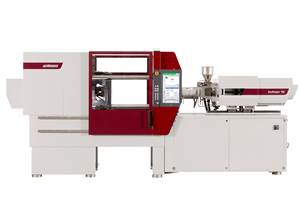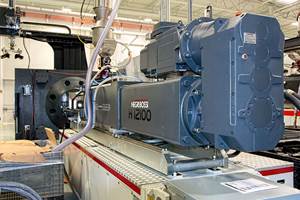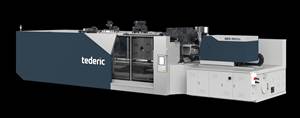The 5 M’s of Molding—Part 3: Material
You’ve accounted for variability in two other “Ms”—mold and man—but materials in their lot-to-lot differences and handling challenges pose a distinct threat to repeatability.
You’ve accounted for variability in two other “Ms”—mold and man—but materials in their lot-to-lot differences and handling challenges pose a distinct threat to repeatability.
Material: One of the fundamental considerations in processing is the material being used. Processing relies heavily upon the consistency and quality of the plastic that has been chosen for the part’s aesthetic and dimensional make up. Here are some of the primary variables that need to be reviewed during the stages of process development and in some cases continuous improvement.
Properties: Every material has its own unique set of molding properties that must be considered as a molding operation is developed. Here is a list of some of these properties as they relate to part aesthetics and dimensions:
Temperature- Mold and barrel temperatures are a huge part of the molding equation. Some examples of potential heat-related deficiencies would be long cycles, warping, burn at end of fill, gassing, etc.
Shrinkage- Every material has its own rate of shrinkage and this is one key measurable that should be considered as material choice is being decided.
Melt Flow: Material viscosity is a key component during process development and improvement review. For instance, a heavily ribbed part might be better suited with a material with a low viscosity to assure that the flowfront moves quickly across the ribs preventing an overpack condition.
Aesthetics & Dimension: There are many variations on engineered materials that either benefit or detract from the overall performance and functionality of part production. Utilize the knowledge and resources of your material manufacturer whenever possible to find the appropriate material solutions.
Additives: There are many situations where material additives can create problems or provide solutions. For instance, the use of color mixing may seem cost effective, yet generate scrap due to poor diffusion leading to faulty parts via color swirls. Or from a different perspective, adding a lubricant to polypropylene might eliminate parts sticking in a mold where draft cannot be added. Work with your material supplier to develop and/or improve a part’s molding capabilities.
Drying: Drying is always a major factor in process consistency. Verify that your dryer throughput is sufficient enough to allow adequate time to properly dry the material being used. It is also important to verify that the material is truly dry through moisture analysis.
Characteristics: When choosing a material, it is important to understand what the typical characteristics are regarding a material’s performance and drawbacks. For instance, nylon has a tendency to shrink; polypropylene tends to have sink issues over large or deep ribs. Look for materials that match the functionality of the part being molded while avoiding potential problems associated with material choice.
Garrett MacKenzie is the owner and editor of www.plastic411.com. Mackenzie started in plastics at the age of 19 as an operator, eventually moving up through the ranks to engineering and management over a 29-year timeframe. He currently works as a plastic injection consultant in engineering and training capacities. He can be contacted at garrett.mackenzie@mail.com.
Next week, Part 4 in The Five “Ms” of Molding: The Machine

Related Content
Fakuma 2023: Wittmann Battenfeld Expands All-Electric Line, Direct-Current Capabilities
Wittmann Battenfeld will introduce the new EcoPower B8X injection molding machine line and show direct current as an energy source for a concept machine that will power its own robot.
Read MoreWord Games: What’s a ‘Hybrid’?
Any molder will tell you there’s a difference in working with electric vs. hydraulic drives. Servohydraulic is still hydraulic; a hybrid machine is something different. Imprecise use of terms causes needless confusion.
Read MoreTederic Promotes High Technology, Broader Market Presence
Four cells are running in its booth including a 1,300-ton multimaterial system highlighting its 2K capabilities.
Read MoreNext-Generation All-Electric and Vertical Injection Molding Machines
Sodick Plustech’s VR-G and MS-G2 Series both utilize the company’s proprietary V-Line technology, separating plasticizing and injection functions, and have upgraded displays, energy efficiency, response time and more.
Read MoreRead Next
For PLASTICS' CEO Seaholm, NPE to Shine Light on Sustainability Successes
With advocacy, communication and sustainability as three main pillars, Seaholm leads a trade association to NPE that ‘is more active today than we have ever been.’
Read MoreBeyond Prototypes: 8 Ways the Plastics Industry Is Using 3D Printing
Plastics processors are finding applications for 3D printing around the plant and across the supply chain. Here are 8 examples to look for at NPE2024.
Read MoreLead the Conversation, Change the Conversation
Coverage of single-use plastics can be both misleading and demoralizing. Here are 10 tips for changing the perception of the plastics industry at your company and in your community.
Read More

























